R (Small
Washington Tablet)
49. We have earlier noticed the
yellow saffron bun twisted around in December 13 - the day of Lucia:
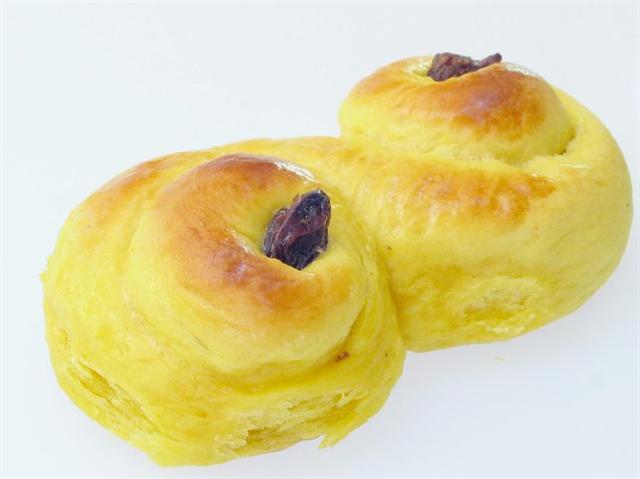
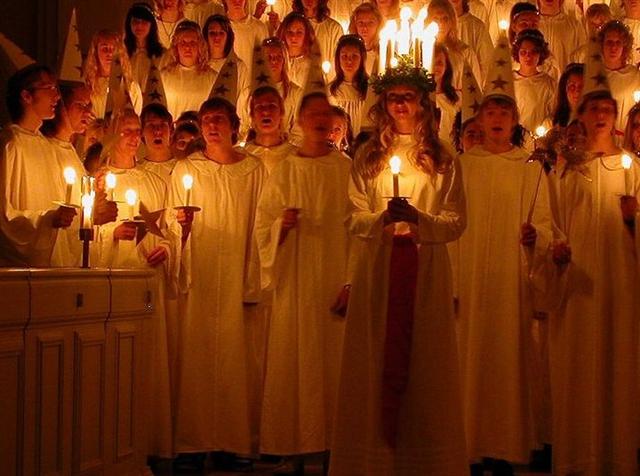
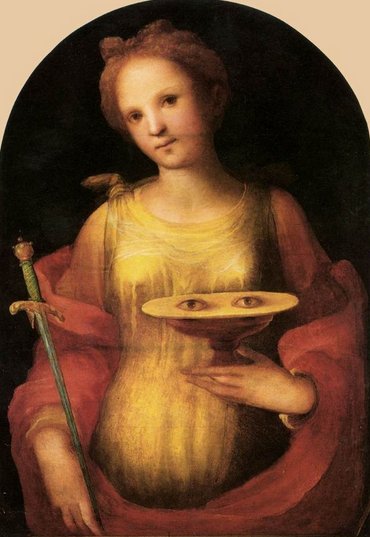
Once upon a time December 13 had
been
regarded as the day of the northern winter solstice.
Presumably we should count the
number of days from
August 13
- the day for the Creation of our
Present World.
|
August 13 |
*122
→ 2 * 61 |
December 13 |
|
225 (*145) |
347 (*267) |
122 * 3 = 366 = 6 * 61
= 2 * 183.
| DEC 18 |
19 |
20 (354 → 12 * 29Ĺ) |
| Febr 20 (416 = 365 + 51) |
21 |
22 (53) |
 |
 |
 |
| Cb6-12 |
Cb6-13 (520) |
Cb6-14 |
| tu te rau hei |
ku hakahonui raua |
| ζ Cephei (*336.2), λ Cephei (*336.3), -/270 Lac. (*336.7), λ Piscis Austrini (*336.8) |
μ Gruis (*337.0), ε Cephei (*337.2), 1/325 Lac. (*337.3), ANCHA (Hip) = θ Aquarii (*337.4), ψ Oct. (*337.5), α Tucanae (*337.9) *337.4 - *41.4 = *296.0 |
Al Sa'ad al Ahbiyah-23 (Lucky Star of Hidden Things) / Shatabisha-25 (Comprising a Hundred
Physicians) ε Oct. (*338.1), ρ Aquarii (*338.2), 2/365 Lac. (*338.5), SADACHBIA = γ Aquarii (*338.6), π Gruis (*338.9) |
|
... Al Sa'd al Ahbiyah ... has been interpreted the Lucky Star of Hidden Things or Hiding-places, because when it emerged from the sun's rays all hidden worms and reptiles, buried during the preceding cold, creep out of their holes! ... |
December 21 - December 13 = 8 → February 23 (Terminalia) - 8 = February 15.
|
SOLSTICE |
DEC 22 (356 = 420 - 64) |
23 (364 - 8) |
CHRISTMAS EVE |
|
Febr 23 (Terminalia) |
24 (55, 420) |
25 |
26 |
 |
 |
 |
 |
|
Cb6-15 (522 → 18 * 29) |
Cb6-16 (131 = 531 - 6) |
Cb6-17 (740 - 214) |
Cb6-18
(525) |
| kiore |
hokohuki |
te rau hei |
te moko e te hokohuki |
|
Hoko. 1. To jump; to rock or swing in rhythm with the chants in festivals, as was the ancient custom; an ancient
dance. He to'o mai e te hoa manu i te mamari ki toona rima, he ma'u, he hoko, the 'bird master' receives the egg in his hand and carries it, dancing. 2. Number prefix: 'in a group of...': hokotahi,
alone; hokorua, in a group of two (also companion, e hakarere te kai mo toou hokorua, leave some food for my companion); hakatoru, in a group of three, etc.; hokohŪa, in a group of how many? HokohŪa ana oho koe ki te rano? With how many people will you go to the volcano? Vanaga. 1. To traffic, to trade, to buy, to ransom (hoÚ); hoÚa te kaiga, to buy land. 2. To sport, to play. Churchill. Move the body to and fro with the rythm of a song. Barthel.
Huki. 1. Pole attached to the poop from which the fishing-net is suspended: huki kupega. 2. Digging stick. 3. To set vertically, to stand (vt.). 4. Huki Š te mahina, said of the new moon when both its horns have become visible. Vanaga. 1. To post up, to publish. 2. To cut the throat (uki). Mq.: Small sticks which close up the ridge of a house. Ha.: hui, the small uniting sticks in a thatched house. Churchill. Standing upright. Barthel. M. Spit for roasting. Te Huki, a constellation. Makemson. Hukihuki. 1. Colic. 2. To transpierce, a pricking. 3. To sink to the bottom. Churchill. |
| β/172 Lac. (*339.2), 4/1100 Lac. (*339.4), π Aquarii (*339.5) CASTOR
|
δ Tucanae (*340.1), ρ Cephei (*340.2), ν Gruis (*340.3), ζ Aquarii, δ Gruis (*340.4), ALREDIPH = δ Cephei (*340.5), 5/1100 Lac. (*340.7), σ Aquarii, 6/650 Lac. (*340.9) *340.4 - *41.4 = *299.0
PROCYON
|
υ Oct. (*341.0), α/91 Lac. (*341.1), HOMAN (Hero) = ζ Pegasi, β Piscis Austrini (*341.2), ν Tucanae (*341.5), υ Aquarii (*341.9) |
η Aquarii (*342.1), σ Gruis (*342.4), SITULA (Water Jar) = κ Aquarii (*342.7) *342.4 - *41.4 = *301.0
POLLUX |
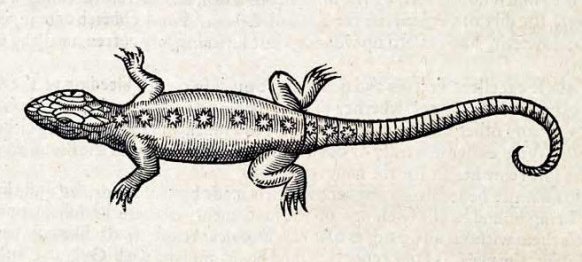 |
|
THE SUN: |
|
DEC 25 |
26 (360
= 424 - 64) |
|
|
"Jan 17
(= 31 - 14) |
18 (424 - 41 = 365 + 18) |
19 (384
→ 394 - 10) |
|
'Jan
31 (396) |
'Febr 1
(59 - 27 = 32) |
2 (398 =
384 + 14) |
|
Febr 27
(58) |
28 (424
= 365 + 59) |
29 (425
→ Cb2-9) |
 |
 |
 |
|
Cb6-19 |
Cb6-20 |
Cb6-21
(136) |
|
kua tupu te mea ke |
|
ε Piscis
Austrini (*343.5), ο Pegasi, β Gruis (*343.8) |
ρ
Gruis (*344.0), MATAR (Rain) =
η Pegasi (*344.2), η Gruis (*344.6), β Oct.
(*344.7) |
Leap night |
|
Nakshatra
Full Moon: |
|
φ Hydrae (*160.3) |
no star listed (*161) |
VATHORZ POSTERIOR = θ Carinae (*162.1),
PEREGRINI = μ Velorum, η Carinae
(*162.6) |
|
Aug
28 (240) |
29 |
30 (608
= 425 + 183) |
|
JUNE 25 (176 = 240 - 64) |
26 (241
- 64 = 6 * 29Ĺ) |
27 (361
- 183 = 178) |
|
Egyptian nfr (good) |
 |
Phoenician teth |
 |
Greek theta |
Θ (θ) |
|
Egyptian water ripples |
 |
Phoenician mēm |
 |
Greek mu |
Μ (μ) |
|
Egyptian courtyard |
 |
Phoenician heth |
 |
Greek eta |
Η (η) |
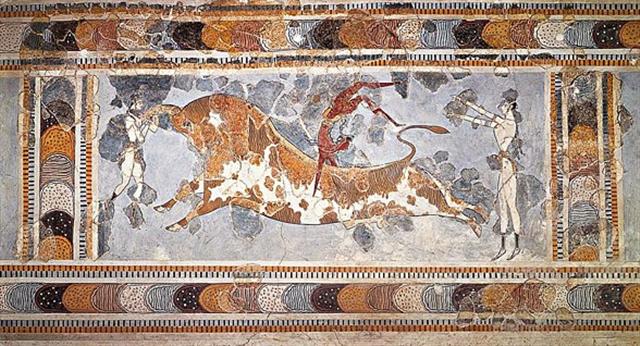
|
DEC 27 (361) |
28 |
29 |
(428 - 64 = 364) |
(*349 - *64) |
JAN 1 (*286) |
|
March 1 (61) |
2 |
3 |
4 |
March 5 |
6 (66) |
 |
 |
 |
 |
 |
 |
|
Cb6-22 (529) |
(392 + 138) |
Cb6-24 (3 '
177) |
Cb6-25
(2 * 266) |
Cb6-26 |
Cb6-27 |
| kotÓa
hia |
te
kava
tu |
kiore |
tu te
ika |
te moko
e te hokohuki |
kua
tupu te kihikihi |
|
|
|
Nakshatra
Full Moon: |
|
ν Hydrae (*163.1)
 |
No star listed (*164)
ALTAIR |
Wings-27 (Snake)
η Oct. (*165.4), ALKES = α Crateris (*165.6)
*165.4 - *41.4 = *124.0 |
ANA-TIPU-4 (Upper-side-pillar - where the guards stood)
MERAK = β Ursae Majoris (*166.2), DUBHE = α Ursae Majoris (*166.7) |
11h (*167.4) χ Leonis, χĻ Hydrae, χ≤ Hydrae
*167.4 - *41.4 = *126.0 = 206 ("July 25) |
AL
SHARAS (The Ribs) = β Crateris (*168.6) |
|
Aug 31 |
Sept 1 (244) |
2 |
3 |
4 |
5 (248) |
|
JUNE 28 |
29 (180) |
30 (245 - 64) |
JULY 1 |
2 |
3 (184) |
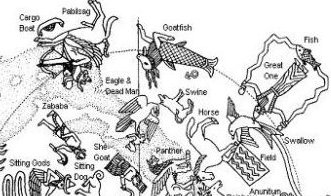 |
Counting from DECEMBER 26 (360) to day 64 + 16 = 80 = March 21
seems to correspond to counting from the place for the star
named Rain (Matar, η Pegasi) to first March 5 (64) and then
further on to the 2nd Spout.
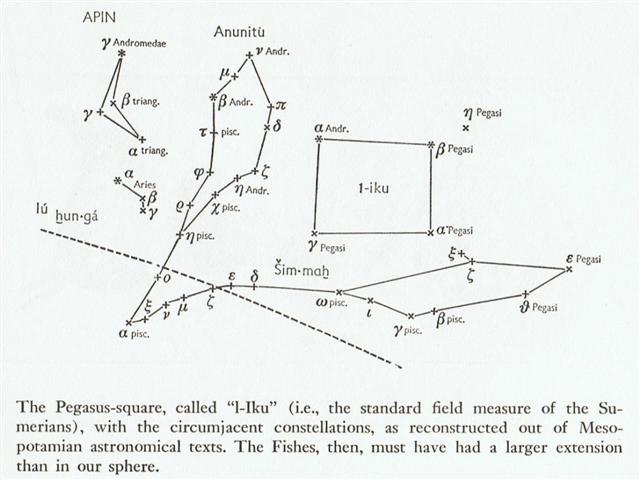
... OgotemmÍli had his own ideas about
calculation. The Dogon in fact did use the decimal system,
because from the beginning they had counted on their fingers,
but the basis of their reckoning had been the number eight and
this number recurred in what they called in French la
centaine, which for them meant eighty. Eighty was the limit
of reckoning, after which a new series began. Nowadays there
could be ten such series, so that the European 1,000
corresponded to the Dogon 800. But OgotemmÍli believed that
in the beginning men counted by eights
- the number of cowries on each hand, that they had used their
ten fingers to arrive at eighty, but that the number eight
appeared again in order to produce 640 (8 x 10 x 8). 'Six
hundred and forty', he said, 'is the end of the reckoning.'

|
Aug 13 |
*122
|
Dec 13 |
*13 |
Dec 26 |
*69 |
March 5 (8 *
8) |
*16 |
March 21 |
|
225
→
KOCHAB |
360 - 13 =
347 |
360 |
64, 429 |
80, 360 + 85
= 445 |
|
→ 80 +
290 / 2 |
*220
... About Carmenta we
know from the historian Dionysus Periergetis
that she gave orcales to Hercules and lived
to the age of 110 years. 110 was a canonical
number, the ideal age which every Egyptian
wished to reach and the age at which, for
example, the patriarch Joseph died. The 110
years were made up of twenty-two Etruscan
lustra of five years each; and 110 years
composed the 'cycle' taken over from the
Etruscans by the Romans. At the end of each
cycle they corrected irregularities in the
solar calendar by intercalation and held
Secular Games. The
secret sense of 22 - sacred numbers were
never chosen haphazardly - is that it is the
measure of the circumference of the circle
when the diameter is 7. This proportion, now
known as pi, is no longer a religious
secret; and is used today only as a
rule-of-thumb formula, the real mathematical
value of pi being a decimal figure
which nobody has yet been able work out
because it goes on without ever ending, as
22 / 7 does, in a neat recurring sequence
[3.142857142857 ...]. Seven lustra add up to
thirty-five years, and thirty-five at Rome
was the age at which a man was held to reach
his prime and might be elected Consul ...
|
→ 225 -
290 / 2 |
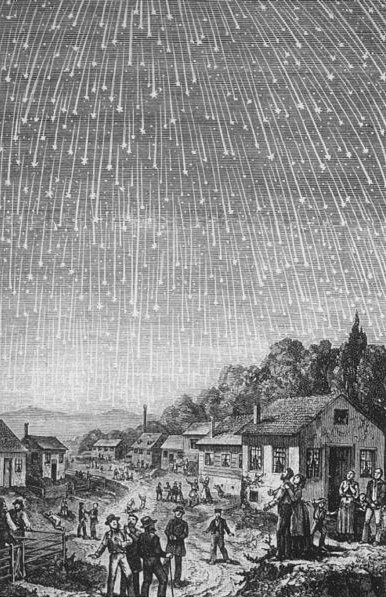
|
















